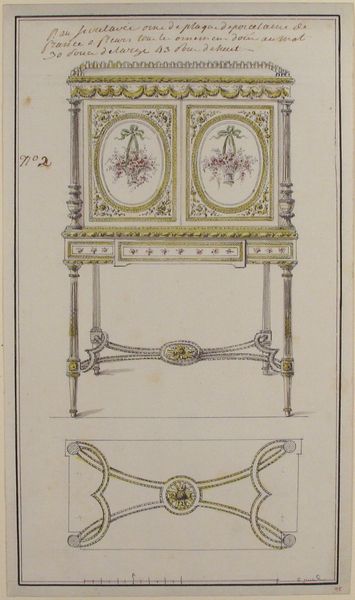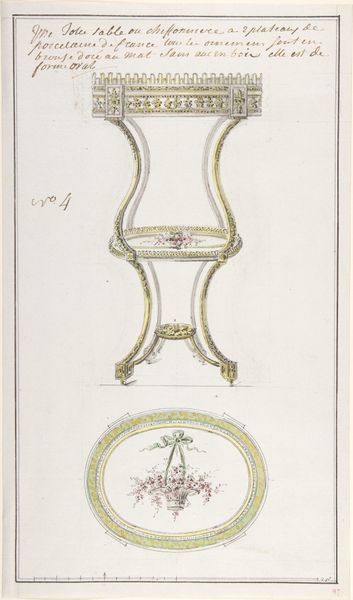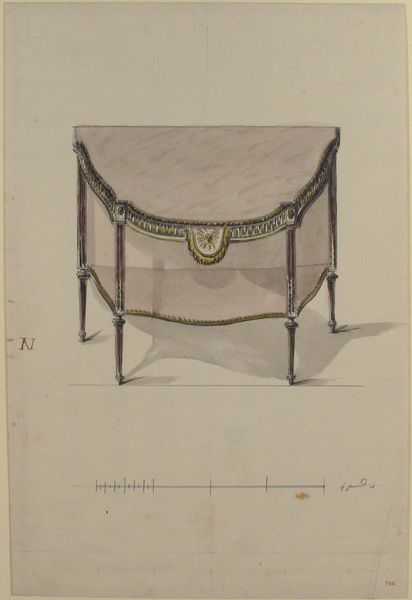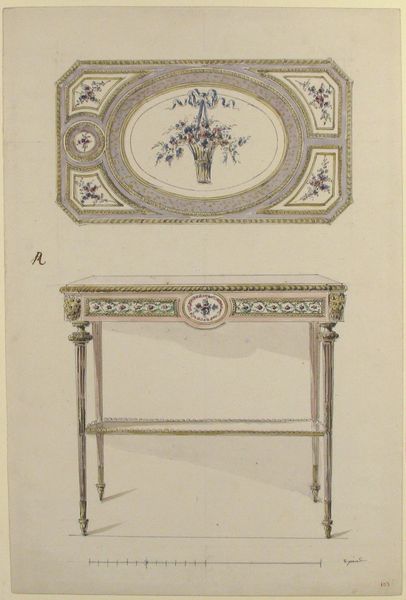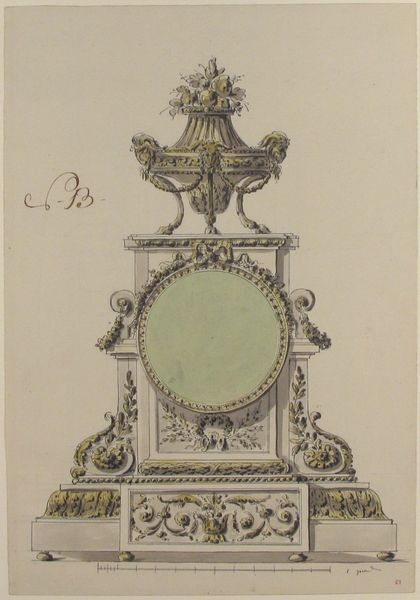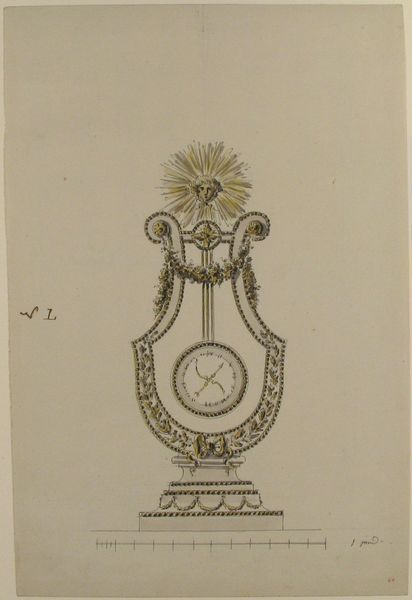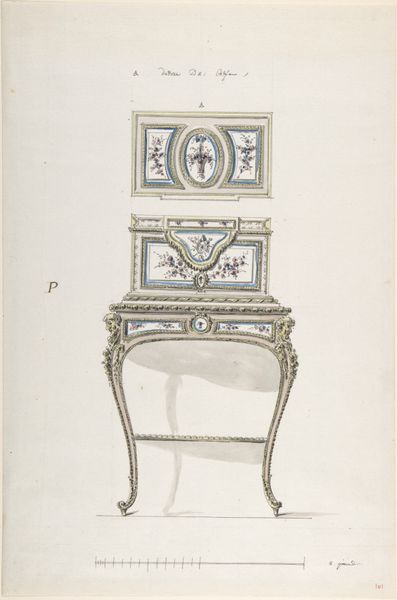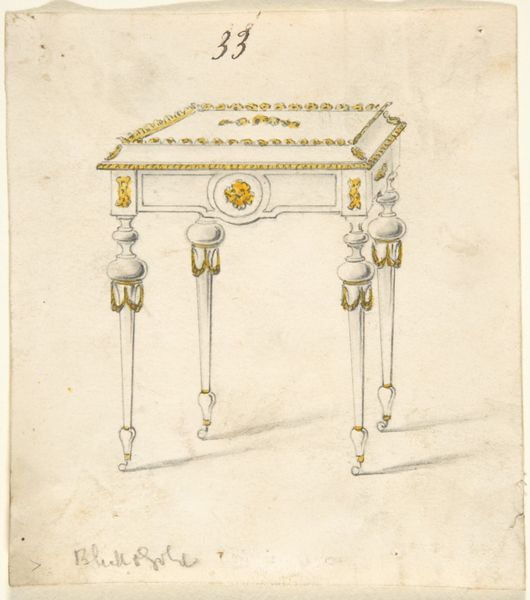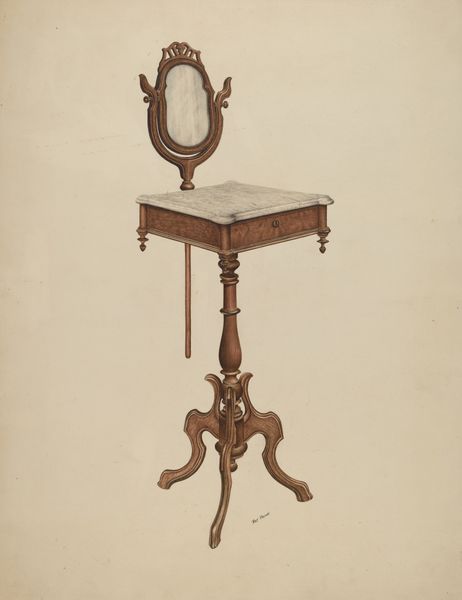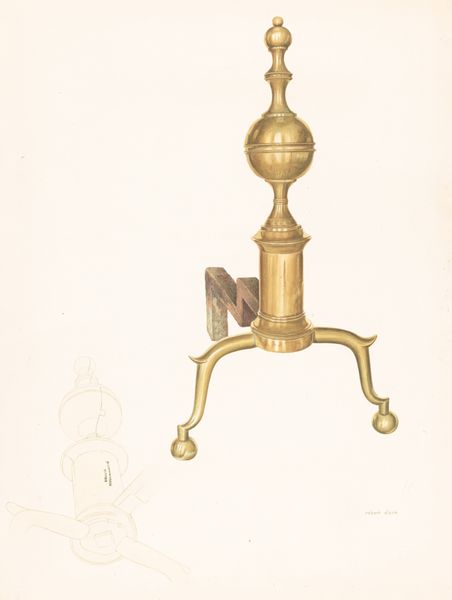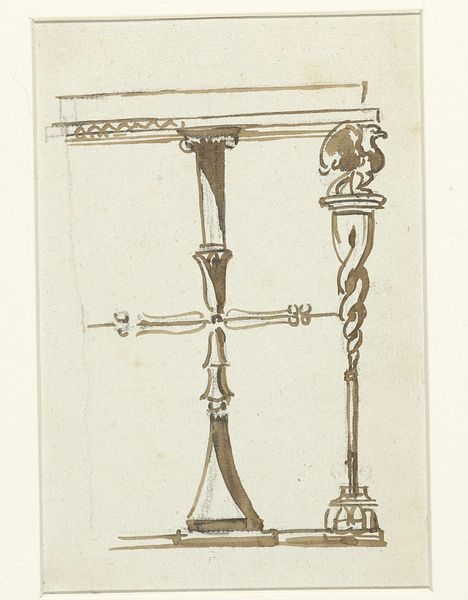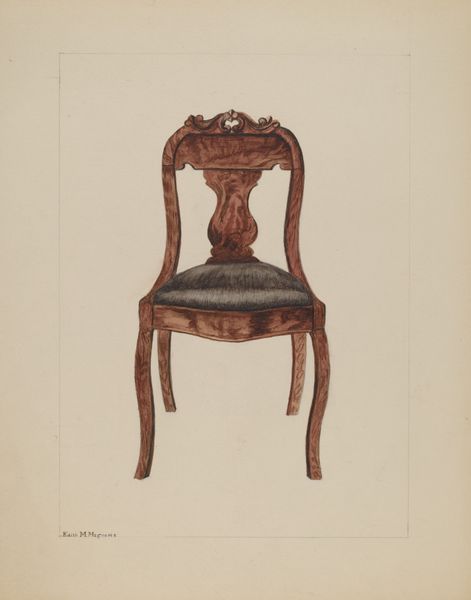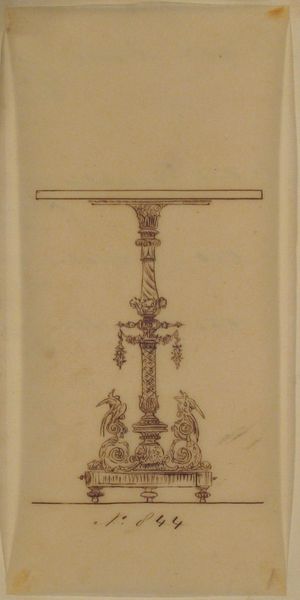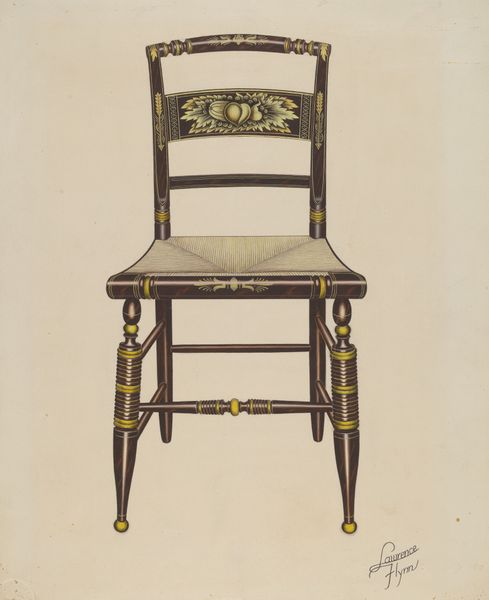
Dimensions: 15 1/16 x 9 7/16 in. (38.2 x 23.9 cm)
Copyright: Public Domain
Editor: So, this is "Design for an Occasional Table," an anonymous watercolor drawing and print from around 1765 to 1790. It feels so delicate and almost frivolous. How do you interpret this work within its historical context? Curator: It’s fascinating, isn’t it? This design embodies the Rococo style, a movement deeply entwined with aristocratic culture just before the French Revolution. The lightness, the curves, the ornamentation – it all speaks to a society focused on pleasure and luxury. But who exactly was benefiting from that luxury, and at what cost? We need to ask ourselves whose stories are not being told. Editor: Right, it's easy to get swept up in the beauty of it all and forget about the social realities. Do you see the porcelain inspiration for the table carrying additional symbolic weight? Curator: Absolutely. Porcelain itself was a luxury good, often imported from Asia or meticulously crafted in European factories under royal patronage. The design explicitly references this value and links it to power, not merely beauty. Furthermore, we must reflect on the craftsmanship required for such pieces, the laborers who toiled to create these status symbols for the elite. Who is missing from the design itself? Editor: That's a really good point; thinking about whose hands were involved behind the scenes. I suppose, given that, something like this wasn't *just* an innocent drawing. Curator: Exactly. These designs weren’t made in a vacuum. They reflected and reinforced a particular social order. What stories of resistance or subversion might be hidden, or hinted at, through a deeper analysis of design choices? The document could be a potent tool for advocating reform. Editor: It’s shifted my perception entirely. Now I see it as a piece loaded with socio-political meaning. I never would have thought that just looking at a drawing of a table! Curator: And that's precisely why we need to view art history as more than just aesthetics. Art can be a lens through which we examine power, inequality, and social change. We need to actively search for these narratives within our historical studies.
Comments
No comments
Be the first to comment and join the conversation on the ultimate creative platform.
